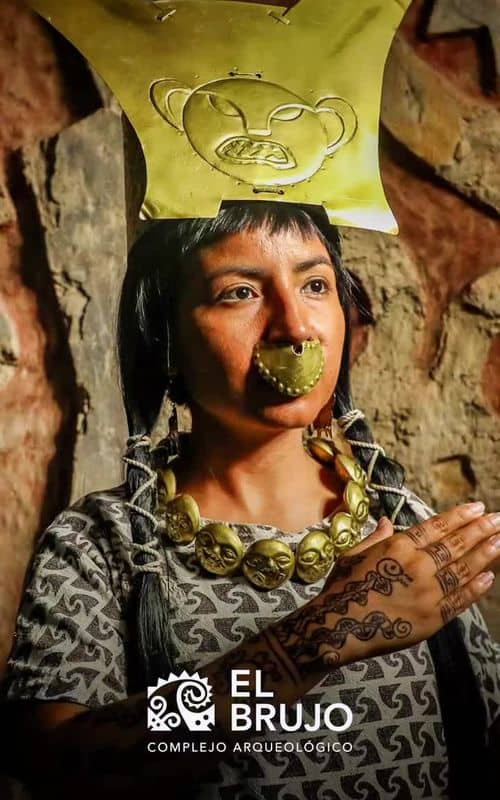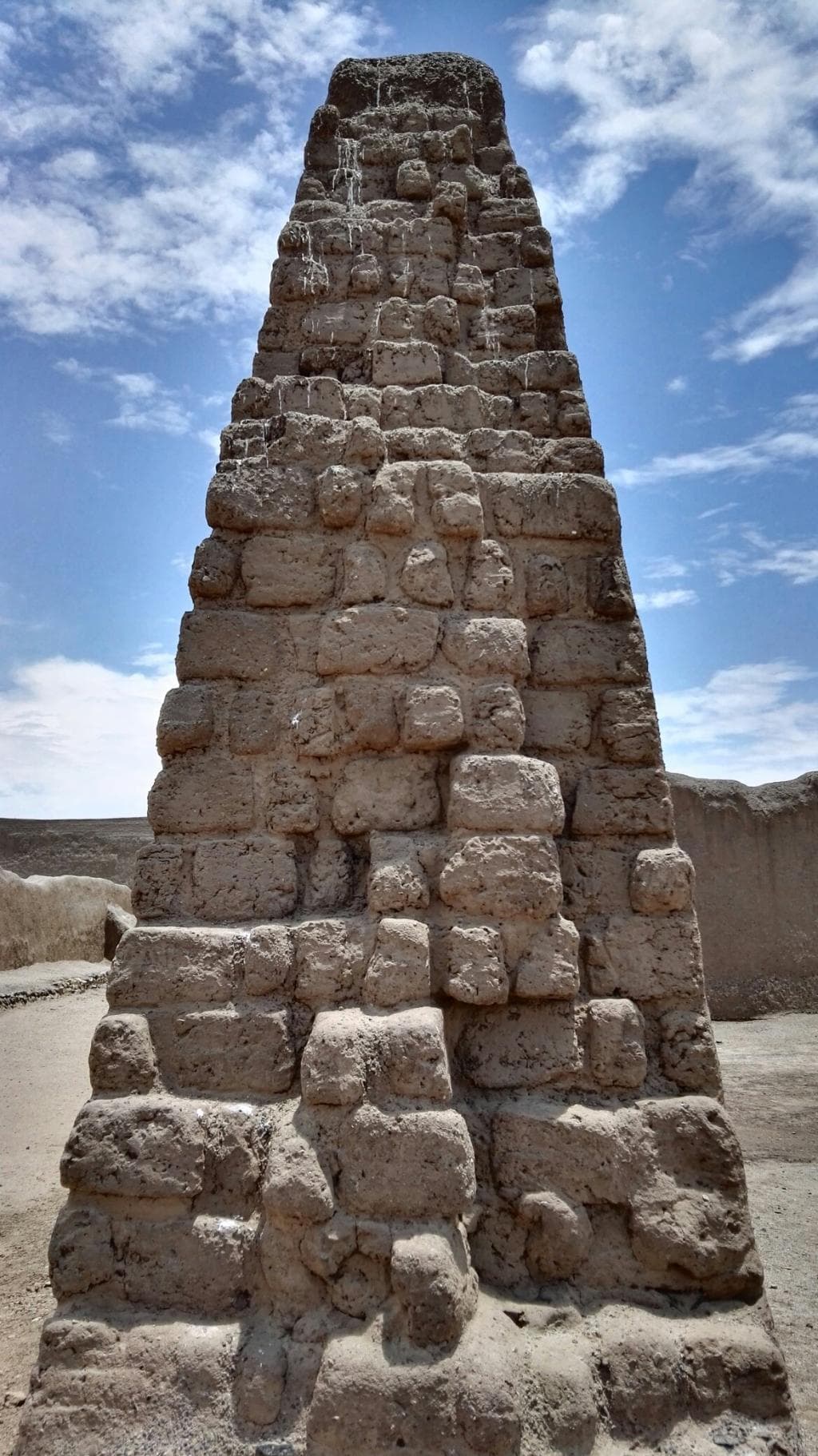Complejo Arqueológico El Brujo
Ancient Moche complex with impressive ruins, vibrant murals, and the tomb of the powerful Señora de Cao.
Highlights
Must-see attractions

Social
From TikTok & Reddit
Best Time
Fewer crowds, cooler temps
Complejo Arqueológico El Brujo
Best Time
Fewer crowds, cooler temps
Highlights
Must-see attractions
Ancient Moche complex with impressive ruins, vibrant murals, and the tomb of the powerful Señora de Cao.
"A fascinating place that combines history, culture, and stunning views of the coast—definitely worth the visit!"
Wear Comfortable Shoes
You'll be doing a lot of walking on uneven terrain. :athletic_shoe:
Book a Tour
Guides offer invaluable context about Moche culture and the site's history. :guide_dog:
Highlights
Discover the most iconic attractions and experiences
Huaca Cao Viejo
Main pyramid structure
Explore the ancient pyramid, a ceremonial site revealing 1800-year-old Moche rituals and royal burials.
Museo Cao
On-site museum
See the remarkably preserved mummy of the Señora de Cao, a powerful Moche queen, and her artifacts.
Patio de los Frisos Marinos
Ceremonial courtyard
Marvel at intricate marine-themed friezes, offering insights into Moche cosmology and daily life.
Wall Murals
Various structures
Discover vibrant murals depicting Moche ceremonies, battles, and daily life, showcasing their artistic prowess.
Plans like a pro.
Thinks like you
Planning Your Visit
Timing Your Visit
Getting There & Around
Best Times
Insider Tips
from TikTok, Instagram & Reddit
Wear Comfortable Shoes
You'll be doing a lot of walking on uneven terrain. :athletic_shoe:
Book a Tour
Guides offer invaluable context about Moche culture and the site's history. :guide_dog:
Bring Cash for Entry
Entry fee is S/10 for adults. Some prefer cash to avoid issues. :moneywithwings:
Learn about Moche Culture
Understanding the Moche beforehand enhances the visit. :books:
Tips
from all over the internet
Wear Comfortable Shoes
You'll be doing a lot of walking on uneven terrain. :athletic_shoe:
Book a Tour
Guides offer invaluable context about Moche culture and the site's history. :guide_dog:
Bring Cash for Entry
Entry fee is S/10 for adults. Some prefer cash to avoid issues. :moneywithwings:
Learn about Moche Culture
Understanding the Moche beforehand enhances the visit. :books:
Visit Magdalena de Cao
The nearby village has charming houses with colorful paintings. :housewithgarden:
What Travellers Say
Reviews Summary
Visitors consistently praise El Brujo for its impressive Moche ruins and the remarkably preserved Señora de Cao mummy and artifacts in the Museo Cao. The site's historical significance and the informative guided tours are frequently highlighted as major draws, making it a worthwhile excursion from Trujillo.
"The archaeological site of El Brujo is absolutely amazing! The ruins are impressive and the museums are very well organized and informative. This was an important ceremonial complex of the Moche culture, dating back to around 100–750 AD. You can still see the remains of pyramids, temples, and incredible murals that tell stories of rituals and daily life. One of the highlights is learning about the Señora de Cao, a female ruler discovered here, whose tomb and artifacts are beautifully displayed in the museum. A fascinating place that combines history, culture, and stunning views of the coast—definitely worth the visit!"
Adrian Hediger
"I spent some really interesting hours in the archaeological complex El Brujo. It covers thousands of years of uninterrupted human occupation. The complex is situated about 70 km north of Trujillo. It is about a 45 minutes drive from Trujillo and absolutely worth the trip. The latest excavations carried out at the pyramid called Huaca Cao have revealed a ceremonial site that is 1800 years old. It was built with the intention to bury a royal person. They found a mummified young female person. The condition of the mummy was so good that the could see tattooes on different parts of her body. We could see the body in the museum. She was called: La dama de Cao, (The Lady of Cao) and we could see a lot of artefacts and jewellery. After seeing the museum, we walked around in the huaca, and it was really interesting. This was the Moche culture, and I recommend reading about the Moche before you visit El Brujo. And it is also interesting to make a stop in the nearby village Magdalena de Cao. Lots of nice paintings on the walls of the houses."
Alfhild Halland
"This place was see inspiring considering it was built 1000 years before the Incas. You could easily spend all day walking around"
david mtichell
What People Like
What People Dislike
Frequently Asked Questions
🚇 🗺️ Getting There
El Brujo is about 70 km north of Trujillo. You can take a colectivo from Trujillo to Magdalena de Cao (around 1 hour), then a mototaxi to the archaeological complex. Some tours also offer direct transport.
Yes, it's quite straightforward. You can take a bus or colectivo to Magdalena de Cao and then a mototaxi. Just allow ample time for the return journey as colectivos can be slow to fill.
The journey typically takes about 45 minutes to 1 hour by car or taxi from Trujillo, depending on traffic and route.
While primarily accessed from Trujillo, you can reach El Brujo from nearby regions. Travelers might take buses towards Chocope and then connect to Magdalena de Cao.
The main complex is walkable, but mototaxis are available for short distances or if you need to travel between different parts of the site or to Magdalena de Cao.
🎫 🎫 Tickets & Entry
The general admission fee is S/10.00 for nationals and foreigners. Students, university students, and seniors pay S/5.00, and children/schoolchildren pay S/1.00.
The archaeological complex and museum are generally open daily from 9 am to 4 pm. It's always a good idea to confirm hours before your visit.
Advance booking is usually not required, but it's recommended to check their official website or contact them for any specific group or special event bookings.
Yes, discounts are available for children, schoolchildren, university students, and seniors.
The ticket typically grants access to the archaeological site, including the Huaca Cao Viejo, the Patio de los Frisos Marinos, and the Museo Cao where the Señora de Cao is displayed.
🎫 🏛️ Onsite Experience
Don't miss the Huaca Cao Viejo, the Museo Cao to see the Señora de Cao's mummy and artifacts, and the Patio de los Frisos Marinos with its impressive murals.
Yes, guided tours are highly recommended. They provide deep insights into the Moche culture, the site's history, and the significance of the discoveries.
You can easily spend 3-4 hours exploring the site and museum. If you want to delve deeper and visit Magdalena de Cao, allocate at least half a day.
Restrooms are available and generally well-maintained. Food options might be limited on-site, so it's advisable to bring snacks or plan to eat in Magdalena de Cao or Trujillo.
The Señora de Cao was a powerful female ruler of the Moche culture, discovered mummified with intricate tattoos. Her tomb and artifacts are a major highlight, showcasing the importance of women in Moche society.
📸 📸 Photography
Photography is generally allowed in most outdoor areas of the archaeological site. However, flash photography and professional photography might be restricted inside the Museo Cao to protect the artifacts.
The vibrant murals on the Huaca Cao Viejo, the exterior of the Museo Cao, and panoramic views of the surrounding desert and coast offer great photo opportunities.
Photography of the mummy and some artifacts inside the Museo Cao may be restricted to preserve them. Always check for signage or ask staff for guidance.
Drone usage is typically not permitted at archaeological sites to ensure the preservation of the structures and to avoid disturbing other visitors.
A versatile camera with a good zoom lens is recommended for capturing details of the murals and distant structures. A wide-angle lens can be useful for the expansive views.
For Different Travelers
Tailored advice for your travel style
👨👩👧 Families with Kids
Tips for families: Bring plenty of water and snacks, as options on-site are limited. Consider a guided tour to keep younger visitors entertained and informed. The relatively short travel time from Trujillo also makes it manageable for a day trip with kids.
🏛️ History Buffs & Archaeology Enthusiasts
Recommendations: Read up on the Moche culture before your visit to fully grasp the context. Engage with guides to learn about the latest archaeological findings and theories. Allocate ample time to explore the museum and the various structures within the complex.
📸 Photographers
Photo tips: Focus on capturing the intricate details of the murals and the textures of the adobe. The Museo Cao, while having restrictions, can offer compelling shots of artifacts if permitted. Consider visiting during the golden hours for softer light and dramatic shadows.
Deep Dives
In-depth insights and expert knowledge
The Moche Culture and El Brujo
Visitors can witness the Moche's artistic and engineering prowess through the vibrant murals that adorn the walls of structures like Huaca Cao Viejo. These murals depict a rich tapestry of their beliefs, rituals, and daily life, offering a visual narrative of their society. The site's strategic location between the desert and the ocean also speaks to their understanding of the environment and their ability to thrive in challenging conditions.
Understanding the Moche culture before your visit will significantly enhance your appreciation of El Brujo. Learning about their social hierarchy, religious practices, and artistic achievements will bring the ruins and artifacts to life, transforming your visit into a truly immersive historical experience.
The Discovery of the Señora de Cao
Her mummy was found in an exceptional state of preservation, allowing archaeologists to observe intricate tattoos on her arms and legs, depicting serpents, spiders, and other symbolic imagery. These tattoos are believed to have held ritualistic or status-related significance. Alongside her were numerous artifacts, including ceremonial staffs, jewelry, and finely crafted pottery, all indicative of her high status.
The Museo Cao, located on-site, is dedicated to showcasing the Señora de Cao and her burial goods. Seeing her mummified remains and the exquisite artifacts provides a tangible connection to this ancient ruler and offers a profound glimpse into the Moche's complex social and spiritual world.
Exploring Magdalena de Cao
Strolling through Magdalena de Cao provides a glimpse into contemporary life in the Chicama Valley. It's a peaceful place to experience local culture, perhaps enjoy a traditional meal, and appreciate the artistic expressions that continue to thrive in the community, inspired by the nearby archaeological wonders.


Social
from TikTok, Instagram & Reddit